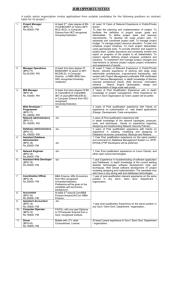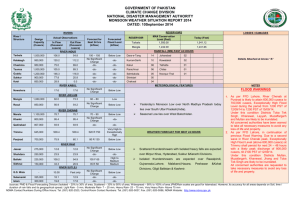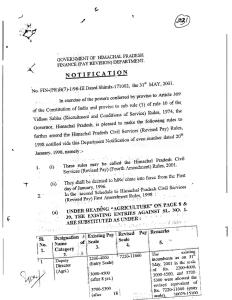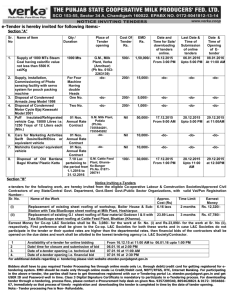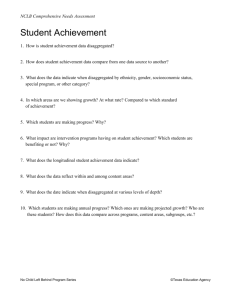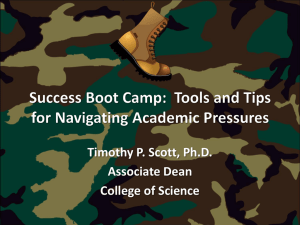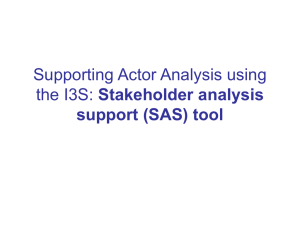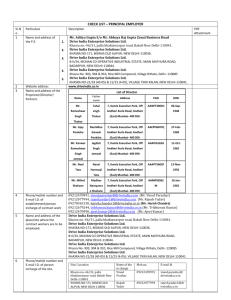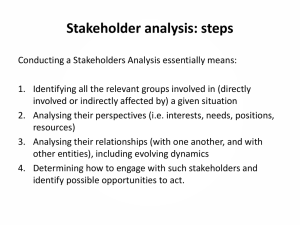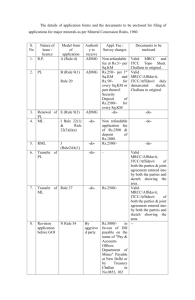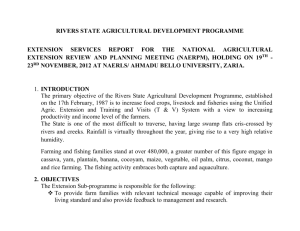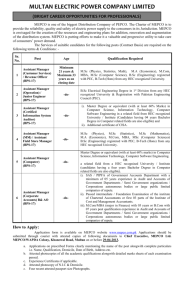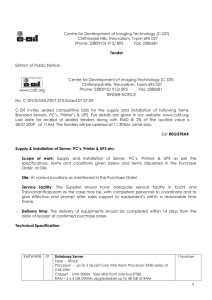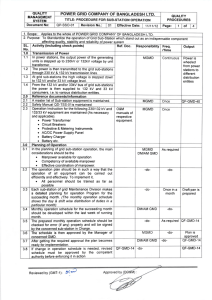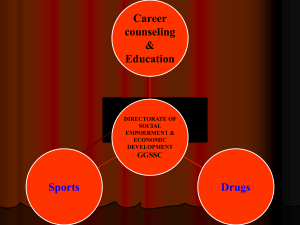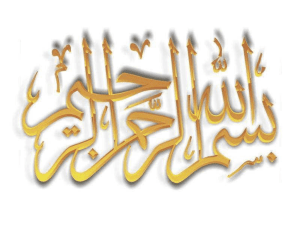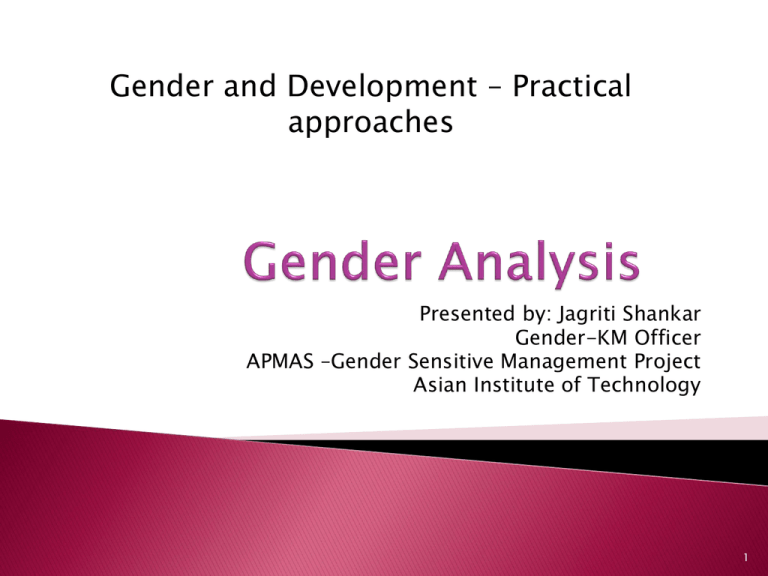
Gender and Development – Practical
approaches
Presented by: Jagriti Shankar
Gender-KM Officer
APMAS –Gender Sensitive Management Project
Asian Institute of Technology
1
1.
2.
What and Why of Gender Analysis
Gender Analysis Frameworks and Tools
2
After this session you should be able to:
recognise the importance of gender analysis for
project planning, implementation and evaluation
use tools for gender analysis as part of
development interventions
3
Gender is a social construction depending
upon time and culture
Women’s and men’s division of labour and
access and control over resources is different
There is a global gender inequality in favour
of men
Men’s work = paid = considered more important
Women’s work = unpaid= considered less important
Due to gender discrimination women do not
get their fair share of opportunities and
benefits
4
Can development initiatives fail because they
do not consider gender ?
5
We have brought
Food for everyone,
Go get from the
tree.
6
Do you think this is Equal Opportunity for all
animals?
Does the same thing happens in development
projects?
Who will be able to get the Food?
What should be done instead?
7
Assumptions during Project design and
implementation:
Men are the head of household -> Project activities
for economic benefits should focus men
Housework or child care is not much efforts ->
Women can handle outside work with house work,
women’s priorities go unnoticed
Women do care work -> Interventions related to
family health should focus women
Development benefits will automatically reach women
8
Gender analysis is a tool
to better understand
the different social,
economic, cultural
and political realities
of women and men, girls and boys.
At its core is understanding culture (underlying
values, norms and beliefs), expressed in the
construction of gender identities and inequalities.
(Word Fish)
9
Better understand our community (women,
men, girls and boys)
Get better results from development
programs
10
Analysis of the Division of Labour and Access and Control of
Resources
Understanding of gender relations and their Implications for
development policy and implementation
Specific gender disaggregated statistics
A Review of Women’s Priorities, Women’s Practical Needs and
Strategic Interest and ways to address them
A Review of Social, Economic, Political Power Dynamics
Absence of GA propose high risk of program failure, less success
or reinforce inequity
11
A gender analysis of health program will inform you how inequalities
disadvantage women’s health, the constraints women face, ways to
overcome constraints.
A gender analysis of women worker’s situations, their needs, work
places, wages, market trends will provide practical information to
advocate for all (women and men) worker’s rights
A gender analysis of product supply chain will tell you women’s
involvement at different stages in the supply chain so to increase
their visibility and gain economic benefits
A gender analysis of water project will inform you where women
collect water, what should be done to increase women’s access to
safe water
12
Gender Analysis should/can be undertaken at
any/all stages of a program/project cycle,
including:
Identification of the project;
Planning or design of the activity;
Implementation; and
Monitoring and evaluation of program
13
Government
Policy makers
Donors
Program Managers
Development Staff
Field workers, etc.
GA should be participatory involving key
stakeholders from the field where the intervention
is to take place
Gender Analysis can be conducted through a variety
of Tools and Frameworks
14
Collect Relevant Data: Sex–disaggregated information
for analysis (Who does what? Gender roles,
responsibilities, priorities of men and women both
within and outside the household? Who has what?
Who controls what?)
Identify Relevant Gender Issues (women’s and men’s
practical needs and strategic interests)
Understand the institutional, economic, social, and
political contexts (What are the differences,
constraints, influences, power dynamics between
women and men?)
Understand the priorities and needs of both men and
women affected by the project (what do they
need/want?)
15
Gender roles framework (Harvard)
Triple roles framework (Carolyn Moser)
Web of institutionalisation framework (Caren Levy)
Gender analysis matrix (GAM)
Equality and empowerment framework (Sara
Longwe)
Capacities and vulnerabilities framework (CVA)
People oriented planning framework (POP)
Social relations framework (SRF)
16
Harvard framework - 1
• Can help planners design efficient
projects
• Improves visibility of women in target
area
Three main tools:
Tool 1: The socio-economic activity
profile –
who does what, when, where and for how
long?
17
18
Tool 1: Activity profile
Activities
Women/Men
Time
Productive/Livelihoo
d activities
Agriculture
Income generation
Employment
Others
M
M
M
Seasonal
Seasonal
W
W
W
W
W
W/M
W
Everyday
Everyday
Everyday
Everyday
Reproductive
activities
Water
Fuel
Food
Childcare
Health
Cleaning and repair
Market
Other
–
–
–
–
2
2
2
4
hrs
hrs
hrs
hrs
19
Tool 2: The access and control profile –
who has access to resources (ex. land,
equipment, capital etc.)?
who has access to benefits (ex. education, health
services, political power etc.)?
who has control over resources and benefits?
20
Access
Control
Assets, Resources
Land
Equipment
Cash
Education
Training
Other
W/M
W/M
M
M
M
M
M
M
M
M
M
M
W/M
W
M
M
M
M
M
M
Benefits
Income
Education
Health
Water User Group
Political power
Other
21
3. Identify factors that determine the gender
differences –
Political, economic, cultural etc.
Communtiy norms, social hierachies
Training and education
Attitude of community towards external
development workers
Past and present influences
Opportunities and constraints
22
Activity Profile
Who does what?
Access and Control Profile
Who has what?
Analysis of Factors and Trends
Socio-Economic-Political factors
Program Cycle Analysis
What gender considerations are needed in project design and implementation
23
The tool uses participatory methodology to facilitate
the definition and analysis of gender issues by the
communities that are affected by them. Using the
Gender Analysis Matrix will provide a unique
articulation of issues as well as develop gender
analysis capacity from the grassroots level up.
All requisite knowledge for gender analysis exists
among the people whose lives are the subject of the
analysis
Gender analysis does not require the technical
expertise of those outside the community being
analyzed, except as facilitators
Gender analysis cannot be transformative unless the
analysis is done by the people being analyzed.
24
CATEGORIES OF ANALYSIS
Unit s of
Analysis #1:
LABOR
Unit s of
Unit s of
Analysis #2: Analysis #3
TIME
Unit s of
Analysis #4
Levels of
Analysis/
Stakeholders
Stakeholder #1 :
Men
Stakeholder #2:
Women
Stakeholder #3:
Community
Stakeholder #4
25
Dimensions of Analysis
WOMEN
MEN
Livelihood
activities,
roles, relations
Assets,
Capabilities
Power and
Decisionmaking
Needs,
Priorities
Institutions,
Mechanism
s,
Governance
• What activities
they do?
• Where?
• When?
• What assets,
capabilities,
opportunities
they have?
• What are
different
vulnerability?
• What are
their different
coping
mechanism?
• What decision
making do
men and
women
participate in?
• What decision
making they
control?
• What
constraints
they face?
• What are
women’s
needs and
priorities
• What are
their
aspirations
for future
• How markets
work
differently for
women and
men?
• Do
governance
takes into
account
women’s
concerns
-do-
-do-
-do-
-do-
-do-
26
The urban population in Cambodia collect water from a
variety of sources, including piped water, public tap,
well, surface water, and water sold by private vendors
which is usually high cost and from unreliable sources.
Though men help sometime but traditionally women
collect water for household use. Most slum dwellers face
drainage and sewerage problems, esp. during the rainy
season. MRD installed 5 tube-wells without
consultations with community or testing ground water
quality. The tube well water contained high iron, lime,
arsenic and could not be used for washing cloths,
cooking food or bathing. After a number of health
problems people stopped using water from the tube
wells.
27

